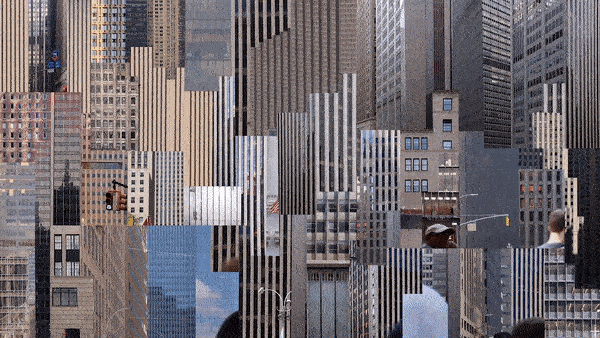
Yuge Zhou: In-between the East and West
Chicago-based artist Yuge Zhou revealed her newest series and her most personal yet. “When the East of the day meets the West of the night” combines mirrored images along the same latitudes on opposite sides of the Pacific and includes correspondence between herself and her mother in Beijing. Her work explores how individuals unconsciously form communities in their environments. As a Chinese-American immigrant, Zhou’s perspective seems necessary right now, as we confront racist narratives and general resentment towards others. Zhou’s work and the story, remind us of our shared experiences and also offers an intricate, mind-bending escape when we need it most.

"When the East of the day meets the West of the night" is a two-part video series that explores the physical and ideological distances between China and the United States. Part one, filmed in two locations near Yuge’s previous homes in Beijing and California, looks across from both sides of the Pacific Ocean. The cameras slowly move laterally as the sun descends and ascends in two skies to create an arc-shaped trajectory. The dual scenes represent contemplation and longing for what lies beyond. Part two follows the same format with the rising and setting moon across mountain ranges of both countries. Yuge recently filmed supermoon rise, in early April, in the Rocky Mountains –which is part of the Great Divide that designates the line at which waters flow either to the east and the west. To balance this shot, she also plans to film the moonset near the Himalaya Plateau in China.
What are your main sources of inspiration?
Most of my projects are inspired by places. They are filmed on location, and all are site-specific. Since I moved to the US in 2007, I have adopted a different language and culture. Unfamiliarity heightens my sensitivities to places that the local population may conceive as normal. There are obvious cultural differences, but there are also universally shared emotions: relaxation, anxiety, joy, hope, indifference, loneliness—all of which is what I hope to evoke through the lens of my work.
What brought you to video from all other formats? Do you have any background in videography?
I was inspired by street photography (such as works by Henri Cartier-Bresson and Walker Evans) in the beginning. Then I went on to photograph daily rituals embedded in micro-narratives and architectural elements. I later moved to video art shortly after I started graduate school because I wanted to explore the concept of time in relation to space. I was compelled to turn a still frame, a frozen moment, into a moving photograph that develops over time. While keeping my focus on places, I expanded my vision from formal qualities of its architecture to the actions of people and to the sensibilities of the landscape. For some of my large-scale installation projects, I not only created the videos but I also constructed sculpted wall relief panels to give physicality and depth to otherwise flat and ephemeral digital images.
You chose to work on the different characteristics between China and the United States, is it something that strikes you on a day-to-day basis being a Chinese-American woman yourself?

I definitely think it is possible for someone to be born in another culture, move to a foreign place and become part of its ‘native citizenry’. But it becomes hard as time passes. I didn’t move to the US until my early 20s, so a lot of my birth country and experiences there [China] are integral to me here. It is impossible to completely start over with a different language and culture. There is always an underlying sense of longing and loss that motivates me to explore and transform myself into a hybrid of two cultures. This ‘in-between’ phase, in turn, makes me more sensitive to the boundaries and bonds in people’s behaviour and environments.
How has our current collective situation (Covid-19 pandemic) inspired you to create your newest series?
I think that art has always been an important force to push society, political leaders, economic engines, and culture forward and interrogate their direction. Or at least, provide people with mental escape. While reading the news from both the Chinese and American mainstream media over the virus outbreak, I saw more and more fear, anxiety, misunderstanding and the need to find a scapegoat amidst the people from both lands. This prompted me to make a more personal statement that communicates harmony and hope for shared commonality and compassion between China and the United States which is so needed at this particular time. I hope this new series can help people come to a mutual understanding and give a measure of hope. Art is always situated within a particular context (in this case, COVID-19) and artists are too. While we are currently consumed with this problem, it will pass, but how humanity responds to a crisis has universal significance, and art is part of that response.
In terms of creation, what's different from the previous video installations you showcased earlier this year?
Having mainly worked solo during the past four years, this new series is more ambitious and challenging in the ways that it involves collaboration with other creative professionals. It requires me to travel to the far reaches of the US and back to my homeland amidst political tensions, to manage crews in both locations and to shoot in remote and unfamiliar places. This is also the first time that I’ve explored symbolism in nature devoid of people as opposed to busy urban environments.

